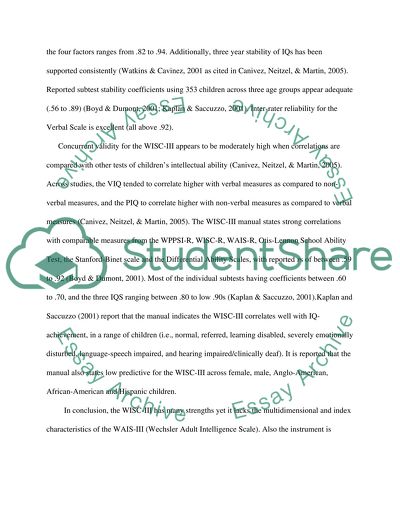The Wechsler Intelligence Scale for Children Essay. Retrieved from https://studentshare.org/miscellaneous/1516759-the-wechsler-intelligence-scale-for-children
The Wechsler Intelligence Scale for Children Essay. https://studentshare.org/miscellaneous/1516759-the-wechsler-intelligence-scale-for-children.


